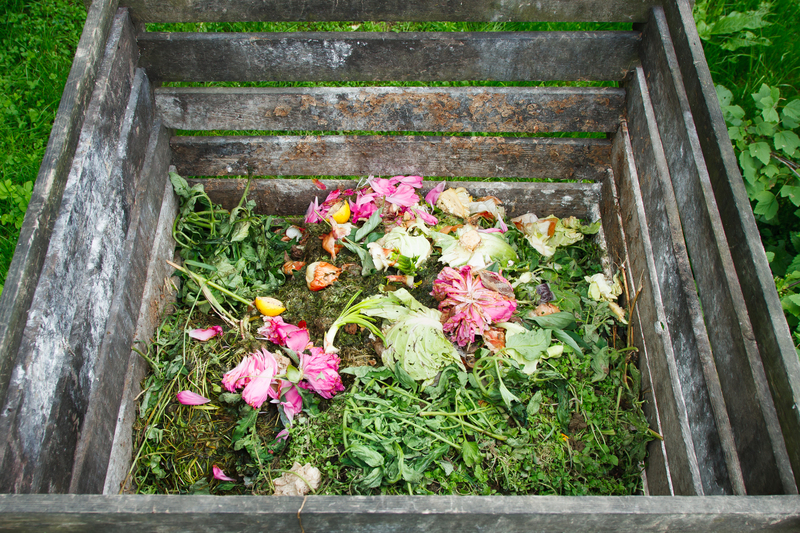Environmentally-Conscious Methods for PPE Waste Disposal
The global surge in the use of personal protective equipment (PPE)--such as masks, gloves, gowns, and face shields--has been crucial in protecting lives, particularly during the COVID-19 pandemic. However, these life-saving items have introduced major environmental challenges. Disposing of PPE waste in eco-friendly ways is not only vital for protecting ecosystems but also for ensuring public health and sustainability. This article explores a comprehensive array of environmentally-conscious methods for PPE waste disposal and provides actionable insights for individuals, organizations, and communities looking to minimize environmental harm.
Understanding the Impact of PPE Waste
PPE is predominantly made from synthetic polymers like polypropylene, polyethylene, and polyester, which are durable but not biodegradable. When improperly discarded, these materials can linger in the environment for decades, entering landfills, waterways, and natural habitats. PPE litter is increasingly being found on city streets, in rivers, and along coastlines, posing threats to wildlife and contributing to microplastic pollution.
- Wildlife Hazards: Animals can ingest PPE components or become entangled in them, leading to injury or death.
- Microplastic Pollution: Over time, degraded PPE breaks down into microplastics, contaminating soil and water sources.
- Resource Consumption: The production and disposal of single-use PPE drain finite resources and increase carbon emissions.
Given these risks, adopting eco-friendly PPE disposal methods is crucial for long-term environmental health.

Best Practices for Sustainable PPE Waste Management
1. Segregation at Source
The first step in mitigating the environmental impact of PPE waste is effective segregation at the point of use. Placing clearly labeled PPE waste bins in strategic locations helps prevent contamination with general recyclables and ensures safe handling.
- Establish separate bins for general waste, recyclables, and hazardous medical waste in workplaces, hospitals, and public spaces.
- Encourage proper use of bins through signage and public education.
- Train staff to distinguish between reprocessable and non-recyclable PPE materials.
Segregation minimizes the risk of cross-contamination and makes later processing more efficient.
2. Reusable PPE Options
The shift from single-use to reusable PPE can substantially reduce waste volumes. Reusable masks, gowns, and face shields made from washable materials not only lower environmental impact but also can prove cost-effective in the long term.
- Encourage healthcare settings and businesses to opt for certified, washable PPE when safety permits.
- Promote public adoption of reusable cloth masks in non-medical environments.
- Implement rigorous disinfection protocols to ensure reused PPE is safe.
Proper laundering practices are vital to maintain hygiene standards with reusable PPE.
3. Advanced Recycling Initiatives
Traditional recycling systems are ill-equipped to process contaminated PPE due to the complex composition of materials and the risk of infection. Nevertheless, specialized recycling technologies can safely convert used PPE into reusable resources.
- Mechanical Recycling: Clean, uncontaminated PPE (like some face shields or clean masks) can be shredded, sterilized, and reprocessed into plastic pellets for manufacturing.
- Pyrolysis: This process converts plastic PPE waste into usable fuels or chemicals via high-temperature decomposition in the absence of oxygen, reducing landfill burden and creating energy.
- Chemical Recycling: Involves breaking down polymers in PPE back to their monomers, which can be re-polymerized into new plastics.
Innovative programs by companies and universities are leading the way in developing scalable recycling solutions for various types of PPE.
4. Thermal Treatment with Energy Recovery
When recycling is not feasible, controlled thermal treatment with energy recovery (also known as waste-to-energy) offers an environmentally-conscientious disposal method.
- Modern incineration plants can safely destroy viruses and hazardous substances while capturing energy for electricity or heating.
- Emission controls and filtering technologies drastically reduce air pollution from incineration.
- Residual ash is managed in accordance with environmental standards to prevent leaching of toxins.
This approach is particularly useful for handling contaminated or mixed-material PPE waste that cannot be recycled.
5. Biodegradable and Compostable PPE Innovations
An emerging solution involves the use of eco-friendly PPE made from biodegradable or compostable materials. These products break down more readily in composting environments, reducing their long-term presence in the environment.
- Starch-based Polymers: PPE items made with plant-based materials degrade faster and do not release harmful microplastics.
- Compostable Face Masks: Some manufacturers now offer masks designed to decompose in industrial compost facilities.
- Bamboo or Cotton Blends: Natural fiber PPE can be composted or returned to the soil when uncontaminated.
Widespread adoption is still limited due to technical and regulatory hurdles, but advances continue to make these alternatives more viable.
6. Safe Community Collection Programs
Setting up community-based PPE waste collection and disposal programs encourages proper management at the grassroots level.
- Install specialized PPE disposal bins in key public areas.
- Organize scheduled pickups and transport to authorized disposal or recycling centers.
- Host educational campaigns to inform the public about the dangers of littering PPE and the benefits of proper disposal.
These initiatives help prevent littering, reduce public health risks, and ensure PPE waste is safely channeled into environmentally responsible disposal streams.
7. Public Education and Awareness
Knowledge is critical to instilling responsible PPE disposal behaviors. Authorities and organizations must invest in consistent, clear messaging about the environmental impact of PPE litter and the correct means of disposal.
- Use multimedia campaigns to reach diverse audiences, including visual guides, social media, and community workshops.
- Partner with schools and local businesses to promote environmental stewardship and incentivize proper disposal practices.
- Highlight the benefits of green PPE disposal methods and showcase success stories to inspire wider participation.
Raising awareness is a low-cost, high-impact way to drive change at scale.
Regulatory and Policy Frameworks for Safe PPE Waste Disposal
Governments and regulatory bodies have a significant role in shaping the future of sustainable PPE waste management. Effective policies and clear guidelines set the standards for collection, treatment, and disposal, ensuring consistency and safety.
Key Policy Measures Include:
- Mandating segregation of potentially infectious PPE from general waste streams.
- Setting standards for reusable PPE and supporting recycling infrastructure.
- Providing financial support or incentives for developing biodegradable PPE solutions.
- Enforcing penalties for improper disposal and littering.
- Facilitating public-private partnerships to innovate waste management technology.
Government action, combined with corporate responsibility and community engagement, provides a holistic framework for minimizing the environmental impact of PPE waste.
Corporate Responsibility and Innovation in PPE Waste Management
Many companies are stepping up to address the PPE waste crisis by incorporating environmentally-friendly practices into their operations. From eco-design to end-of-life management, businesses have multiple opportunities to make an impact.
- Product Redesign: Developing PPE products using less material, recycled input, or biodegradable substances.
- Take-Back Programs: Corporations collecting used PPE from clients or staff for proper processing.
- Collaborations: Partnering with environmental organizations and recycling companies to create closed-loop systems for PPE materials.
Such innovation not only reduces a company's environmental footprint but also enhances brand reputation and stakeholder trust.
How Individuals Can Promote Environmentally Conscious PPE Disposal
Everyone has a role to play in reducing the negative environmental effects of PPE waste. Here's how individuals can help:
- Use reusable PPE--like washable masks--whenever possible and appropriate.
- Dispose of single-use PPE in designated bins rather than littering or putting them with recyclables.
- Cut ear loops on masks and gloves to prevent harm to wildlife before disposal.
- Participate in community clean-up days and local PPE waste collection programs.
- Stay informed about local PPE disposal guidelines and new green initiatives.
Small changes in daily behavior can collectively have a large positive effect on the environment.

The Future of Eco-Friendly PPE Disposal
As technology advances and awareness grows, new opportunities are emerging for environmentally-conscious PPE disposal. Biodegradable PPE, sophisticated recycling methods, and enhanced regulations promise a more sustainable future.
- Continued investment in research will yield better materials and disposal technologies.
- International cooperation can standardize best practices and support global adoption.
- Consumer demand for sustainable products will encourage innovation and market growth for green PPE solutions.
The objective is to strike a balance between **protecting public health** and **preserving the planet**.
Conclusion: Building a Resilient and Sustainable PPE Waste Management System
The environmental challenges presented by the widespread use of personal protective equipment call for urgent and coordinated action. By adopting **environmentally-conscious methods for PPE waste disposal** --from personal responsibility to innovations in recycling--we can mitigate pollution and safeguard both people and the planet. Governments, businesses, and individuals must all collaborate to develop scalable solutions, enforce responsible practices, and foster lasting change.
With ongoing education, investment, and innovation, a cleaner, safer world is within reach. Make the choice today to dispose of your PPE in an environmentally conscious manner--our health and the future of our planet depend on it.